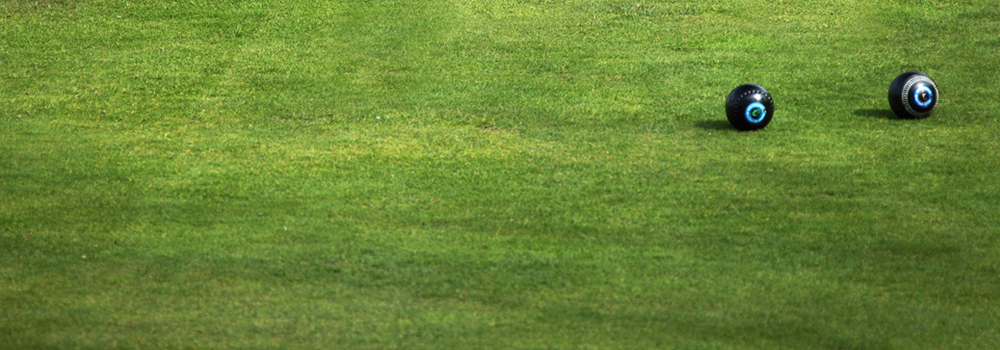
According to some 'experts', we are experiencing an early autumn; in which case you will need to crack on with your end of season renovations as soon as sensibly possible.
Key Tasks for September

Grass growth will start to slow down once soil and air temperatures drop below double figures. Your main concern for September will be organising your end of season renovation work; the extent and nature of the work will be entirely down to the condition of the green and what work you can afford to carry out.
Unfortunately, one of the deciding factors that often reduces the effectiveness of these planned works is the amount of money budget the club has available. It can cost anything between £1200-£1500 for a contractor to come in and do all the work.
Savings can be made if the club undertake the work themselves; however, the effectiveness of the work carried out will be determined by the equipment they have at their disposal. Savings can also be made if clubs buy materials in bulk (several clubs group buying).
The best way to balance the health of the grass plant and to achieve good green speed is to promote and carry out effective cultural practices to maintain surface playability.
The following activities are generally implemented during autumn renovations and usually carried out in the following order, when conditions allow. The sequence of operations and their intensity will vary from green to green according to the condition at the end of the season.
Mowing the sward, preparing surfaces for renovation: lower cutting height to about 3-4mm to clean and prepare green for renovation operations. The mower can then be used to clean up the green after scarifying has been completed. With the season finished and the green closed down for the winter, mowing will only be required to maintain a winter height of cut at 8-12mm. Some clubs are now using rotary mowers to keep the greens tidy through the winter months. This methods does two jobs in one, it keeps the grass topped and hoovers up any surface debris, such as twigs and leaves.
Scarification, removal of unwanted debris: collect and disposal of arisings. Depending on the severity of the thatch, you may need to scarify several times in different directions. However, in most cases, if regular verticutting/grooming has taken place during the growing season, you would probably only be required to scarify in two directions. Do not scarify at right angles to the previous scarification line. Depth of scarification between 4-15mm, depending on depth of thatch to remove.
Aeration is the decompaction of soil, improving air and gas exchange in the soil profile. Depending on the turf's condition, you can choose to carry out hollow or solid tine spiking. Hollow tines are generally used on a bi-annual basis or when you have a severe thatch problem. Depth of aeration will be determined by the depth of your soil profile and what problems you want to rectify. Hollow tining is best achieved to a depth of between 75-100mm. Solid or slit tines can be set to penetrate deeper, ideally between 150-200mm.
Topdressing restores levels and improves surface drainage. Ensure you use compatible topdressing materials, sands, sand/soil mixes. Spreading can be achieved by several methods, utilising pedestrian or ride-on, disc or drop action top spreaders, or by hand using a shovel and a barrow. Best carried out in dry weather. It is important that the topdressings are spread uniformly. Brush to incorporate dressings and to help the grass stand back up. Brush in with a lute or drag brush/mat to restore levels.
Overseeding restores grass populations. It is important to ensure a good groove or hole is made to receive the seed; good seed to soil contact is essential for seed germination. Good moisture and soil temperatures will see the seed germinate between 7-14 days.
Fertilising, provides nutrients for grass growth. Apply a low N nitrogen fertiliser product, something like an NPK 5:5:15 to help the sward through the autumn period.
Irrigation is essential after renovations to ensure your seed germinates.




Traditionally, the good levels of available moisture, coupled with adequate warmth at this time of the year, make it the perfect window to successfully germinate and establish seed. Getting young seedlings off to a good strong start is important in terms of maximising establishment prior to the onset of winter.
Yet again, humates are strong in this regard with the increased nutritional availability, hormones synthesis and bacterial promoting benefits all contributing to generate real gains in post germination establishment. A high quality pressure extracted humate with a natural pH of just above 4 will give the best results; and with lower application rates, typically from around 5-10 L/ha with the advantages a natural pH affords, such products are a very affordable and justifiable expense for sports clubs of all disciplines and levels.
If you have not yet taken the plunge with humates, and for that matter seaweeds and carbon sources, then I would go as far as to say you really are missing a massive, cost effective trick.
If you do what you always do, you’ll get what you always got: A common phrase often attributed to many principles. In this instance. the subject for reappraisal is iron sulphate: for years applied to turf surfaces prophylactically throughout the autumn and winter as a turf hardener, with the intent of helping the turf resist the rigours of the winter climate and fungal disease by thickening cell walls.
Perceived wisdom which holds no truth in scientific reality.
Iron has no involvement in the thickening of plant cell walls; for that, you need calcium. Furthermore, the acidic nature of Iron sulphate will actually act to weaken plant cell wall structure. The unsuitability of Iron sulphate for this purpose was shown in disease trials in autumn 2016, where prophylactic applications of iron sulphate statistically performed no better in controlling disease concentrations around 35-40%. Curative applications of iron sulphate produced a 50% reduction in disease concentration, but you’ve then got the problem of reduced leaf integrity due to the acidic action.
In this instance, use phosphite, which stimulates plant protection without simultaneously making it more susceptible to further infection.
These research findings concur with the message we at Pitchcare have been recommending for some time, which is:
- Do not use iron sulphate to harden turf against disease
- Use foliar calcium in combination with phosphite and potassium silicate
- To promote colour, use a 100% chelated iron (worth asking the question: how much is chelated, as most are not 100% and contain some iron sulphate) or, alternatively, consider applications of magnesium
If you are going to apply iron sulphate, then do so in the spring to control moss when temperatures are too low for bacterial moss treatments to work effectively, and the sulphate will promote early season plant metabolic function.
In terms of general nutrition, then September is still not too late for an organic based fertiliser, with longevities of up to eight weeks, this should see you through to the end of autumn.
July through August witnessed high disease pressure due to prolonged humidity driven by persistent rainfall and overcast days. During this period, diseases such as microdochium patch constantly bubbled away on fine turf surfaces, ebbing and flowing in the background to varying degrees of severity. Due to typically strong leaf growth through July and August, the grass is often able to outgrow the disease, preventing severe infection. However, as cooler nights in September cause soil temperatures to fall and growth rates to subsequently subside, the grass begins to lose any advantage.
The use of systemic active ingredients will be the only option once Iprodione - the active ingredient in Chipco and Interface - is most likely to be withdrawn in the next twelve months.
The new norm will be fungicides having to be applied prior to visible signs of disease, using cross referencing of historical outbreaks, weather forecasts and turf conditions to make informed decisions on the best timing. This latter approach is something which actually has the advantage of preventing early season scars, and the subsequent depositing of densely concentrated populations of fungal spores at their margins lying in wait for the slightest whiff of opportunity to fire back up and create ever expanding scars all winter long.
Now is the key time to apply entomopathogenic nematodes for the control of Leatherjackets and Chafer Grubs. Plenty of moisture both before and after application is the key to success, and the addition of a penetrant wetting agent will further aid results.
Please note: More information on these and many others can be found here: https://www.pitchcare.com/useful/diseases.php
Ensure you look after your equipment and store safe and secure, it is a good idea to get into a habit of washing down and cleaning after use.
- Keep your machinery clean and well serviced, check bottom blades and cylinders for sharpness.
- Keep machines overhauled and clean.
- Keep an eye on your material stocks (seed, topdressing, petrol, oil), remembering to replenish as required.
Also, with your renovations imminent, make sure you have the necessary equipment available (owned or hired).

Pitchcare is the only provider of LANTRA accredited training courses in the maintenance of Bowls Greens. More information
We can also arrange Lantra accredited training on site to groups of 6 – 10 people. Email Chris Johnson for information.
The Course Manual is available for purchase separately.
Check and inspect ditches, floodlights, structures and any site furniture for damage; keep the site clean and maintain a tidy appearance throughout the facility.
Current Forum discussion: Bowls
Magpie damage to bowling green


